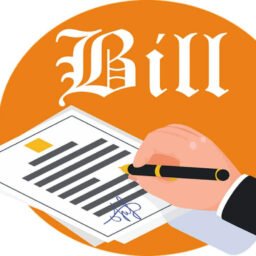
INTRODUCTION
The Supreme Court upheld the constitutionality of various provisions of The Insolvency and Bankruptcy code, 2016[1] with Swiss Ribbons Private Limited and Anr. v. Union of India and Ors.[2] The case will have a significant impact on the interpretation of the code and the Impact of this judgment will be lucid in the number of settlements and resolutions that will take place pre-insolvency also the judgment will improve the confidence of bidders and investors in acquiring assets through IBC through which ease of doing business in India can increase[3]. The decision of The Hon’ble court has laid the foundation for the implementation of the insolvency resolution process by making the positions of operational creditors and financial creditors more eloquent.
ISSUES
The petitioner in the following case has very keenly observed the corrigendum in The Code and challenged a total of 7 provisions of The Code by classifying them as unconstitutional, arbitrary, and ambiguous. To elucidate the following provisions in contention, The Supreme Court juxtaposed the provisions with prior insolvency regimes in India highlighting that the provisions contemplate equitable and fair treatment to all the parties involved in Insolvency proceedings. The 7 provisions in question are:-
- The first issue is related to the arbitrary classification between financial creditors and operational creditors by challenging the operational creditors’ obligation to give a demand notice to the operational debtor to initiate the insolvency proceedings as it is mentioned under section 8[4] of The Code which is absent in a case of financial debt[5].
- Further, the petitioner challenged section 21 of the Insolvency and Bankruptcy Code, 2016[6] which lays provisions for the formation of a committee of creditors. The main point of contention here is the non-availability of voting rights to the operational creditors.
- Furthermore, the petitioner challenged the 90% threshold of voting shares which are to be collected by the committee of creditors for withdrawal of the application from the adjudicating authority as mentioned under section 12A[7] of The Code.
- The petitioner then challenged the Information utilities due to their unregulated nature which endangers and impairs the credibility of information provided by them.
- The petitioner also challenged the adjudicatory power of the Insolvency resolution process professional as mentioned under section 20[8] of The Code.
- The petitioner further challenged section 29A[9] of The Code which bars certain enlisted people to be a resolution applicant.
- At last, the petitioner challenged the restrictions laid by the code on certain parties to act as resolution professionals.
RATIO DECIDENDI
- For arbitrary classification between financial and Operational creditor, Initially, the Hon’ble court relied on the rule derived from Article 14[10] of The Indian constitution that, “A constitutional infirmity is found in Article 14 only when the legislation is manifestly arbitrary.” Further, the court proved intelligible differentia between the operational and financial debt by providing contentions like:-
- Financial creditors generally lend finance as a term loan or finances for working capital where on the other hand operational creditors provide finance that is related to the supply of goods.
- Financial debt consists of large secured debts extended by a fewer number of people and operational debt consists of small unsecured debts extended by a large number of people.
- Financial debts have an accurate amount of liabilities which is verifiable by information utilities where on the other hand operational debt may or may not be recorded.
Further, the court pressed Rule 4[11] of the Insolvency and Bankruptcy Rules, 2016, and Section 420 of the Companies Act, 2013[12] established that the principles of Natural Justice are being upheld as the creditors and the adjudicating authority have to send a notice to the debtor on acceptance of the application.
- The Hon’ble court had an eloquent take on the second issue as the court enunciated that the quantum of operational debt is smaller than the financial debt which makes the viability of a business more dependent on the latter as a result financial creditors are given voting rights.
- In the light of the third issue, The Apex Court upheld the threshold of 90% and section 60[13] of The Code rules out all chances of unfairness and malpractices as the final and binding decision is of adjudicating authority (NCLT) which can further be challenged in court (NCLAT).
- The fourth issue made The Apex court concede with the petitioner henceforth, the court ruled that the information by such utilities can be rebutted if there appears to be prima facie default.
- For the fifth point of contention raised by the petitioner The Supreme Court eloquently suggested that the role of an insolvency resolution professional is simply administrative in nature further, the court refuted the claim by stating that the duties of such a professional mainly constitute determining and verifying the amount of claim as mentioned under the Section 18[14] of The Code and on basis of his report the adjudicating authority takes decision hence the resolution professional has no adjudicating authorities.
- In counter to the sixth provision challenged by the petitioner, the Hon’ble Court made it cogent that following the Insolvency and Bankruptcy Code (Amendment) Ordinance, 2017[15] which was in line with The Securities and Exchange Board of India Act,1992[16]. This helps in preventing people who may have an innuendo against the company to initiate insolvency proceedings.
- For the seventh issue raised by the petitioner, the Supreme court enunciated that the parties having a connection with business activities or with the resolution applicant are disqualified from being resolution professionals for the formation of a fair and equitable report and to let the committee of creditors act independently.
CONCLUSION
The Supreme Court summarizes the judgment in one line, “The defaulter’s paradise is lost. In its place, the economy’s rightful position has been regained.” The line in itself is the foundation for modern bankruptcy laws. It is worth mentioning that the judgment is articulate upon its take on the constitutionality of The Insolvency and Bankruptcy Code, 2016. The judgment buttresses all the contentions by establishing the premise behind its reasoning. The interpretation of the provisions through such cases makes the vision of the devised law more lucid and helps in the effective implementation of such laws. The judgment has validated the purpose of The Code which is easing the way of doing business to facilitate economic growth and development and to protect the interest of all stakeholders.
Author(s) Name: Sarthak Mittal (Guru Gobind Singh Indraprastha University, Delhi)
References:
[1] The Insolvency and Bankruptcy code, 2016 (Act no. 31 of 2016), Henceforth referred as , ‘The code’
[2] (2019)4 SCC 17
[3] Swiss Ribbons vs. Union of India – The foundation for modern bankruptcy laws, by L. Vishwanathan, Bishwajit Dubey, Spandan Biswal (11th February 2019 newsletter of Cyril Amarchand Mangaldas)
[4] Section 8 of the Insolvency and Bankruptcy code refers to the steps to be followed by the operational creditor in order to initiate the insolvency proceedings against an operational debtor.
[5] Swiss Ribbon Pvt. Ltd. V Union of India: The IBC Case by Anmol Jain and Srishti Rai Chabra (Available at: CBCL Blogs)
[6] Section 21 of The Insolvency and Bankruptcy Code, 2016 refers to the formation of Committee of creditors
[7] Section 12A of The Insolvency and Bankruptcy Code, 2016 refers to the withdrawal of application from the adjudicating authority
[8] Section 20 of The Insolvency and Bankruptcy Code, 2016 refers to the powers of an insolvency resolution professional.
[9] Section 29A of The Insolvency and Bankruptcy Code, 2016 refers to the list of certain people who are barred from being resolution applicant
[10] Article 14 of The Indian Constitution refers to the Right to Equality
[11] Rule 4 of The Insolvency and Bankruptcy Rules, 2016 refers to the requirement of application to be sent to adjudicating authority.
[12]The Companies Act, 2013 (Act no. 18 of 2013), Section 420 of The Act refers to the Orders issued by the Tribunals
[13] Section 60 of The Insolvency and Bankruptcy Code,2016 refers to the provisions laid down for adjudicating authorities for corporate persons (NCLAT)
[14] Section 18 of The Insolvency and Bankruptcy Code, 2016 refers to the duties of Insolvency Resolution professional
[15] The Insolvency and Bankruptcy Code (Amendment) Act, 2017 (No.18 0f 2018)
[16] The Securities and Exchange Board of India Act,1992 (No.15 of 1992)






